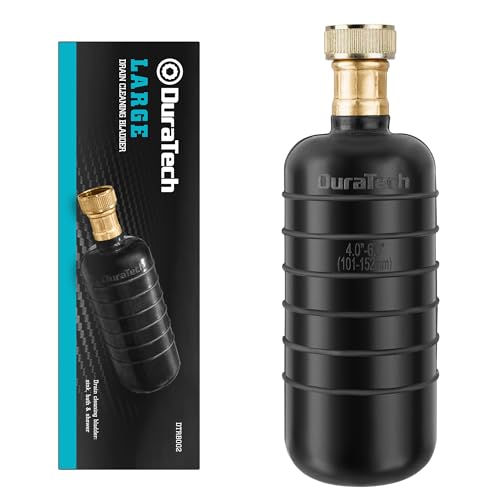If you’ve ever wondered about the impact of pavers on your outdoor space, you’re in the right place. Pavers are not only a stylish addition to your landscape but can also play a crucial role in managing water runoff. In our exploration of whether pavers help with drainage, we’ll uncover the ways in which these versatile elements can enhance both the aesthetic appeal and functionality of your outdoor areas.

When it comes to creating a patio, driveway, or walkway, choosing the right materials can make a significant difference in how effectively water is directed away from your property. By using pavers strategically, we can improve the overall drainage system of your outdoor space, ensuring that excess water is efficiently channeled to prevent issues like pooling or erosion. Join us as we delve into the world of pavers and discover how they can be a valuable asset in maintaining proper drainage in your outdoor living environment.
Understanding Drainage and Its Importance
As landscape designers, we know that proper drainage plays a vital role in ensuring the longevity and functionality of outdoor spaces. Let’s delve into the basics of drainage and why it is crucial for the health of your outdoor environment.
The Basics of Drainage
When it comes to outdoor design, drainage refers to the process of managing water flow to prevent issues like pooling, erosion, or water damage. By incorporating pavers strategically into your outdoor areas, we can effectively control the direction of water runoff, helping to maintain a healthy landscape.
With well-designed drainage systems, excess water from rain or irrigation can flow away from your property efficiently, preventing potential water-related problems. Pavers, when installed correctly, can aid in redirecting water away from structures, ensuring that your outdoor space remains free from water accumulation.
Why Proper Drainage is Essential
Proper drainage is essential for several reasons. Firstly, it helps in preventing water stagnation, which can lead to soil erosion, plant damage, and structural issues. By using pavers to create permeable surfaces, we can facilitate water infiltration into the ground, reducing the risk of erosion and improving soil health.
Additionally, adequate drainage can prevent flooding during heavy rainfall, protecting your outdoor space from water damage and creating a safe environment for both you and your plants. By incorporating pavers into your landscape design, we can enhance the aesthetic appeal of your outdoor space while ensuring that water is managed effectively.
Understanding the significance of drainage and incorporating pavers into your outdoor design can help create a sustainable and visually pleasing environment that thrives in all weather conditions.
What Are Pavers?
As landscape designers, we often advocate for the use of pavers to optimize outdoor spaces and manage water runoff effectively. Pavers are durable materials like concrete, brick, or natural stone used to create solid surfaces on driveways, patios, and walkways. These materials are instrumental in enhancing the aesthetics and functionality of outdoor areas while contributing to sustainable landscape design practices.
Different Types of Pavers
In our design projects, we carefully select pavers from a variety of options based on their unique characteristics and the specific requirements of the outdoor space. Some common types of pavers include:
- Concrete Pavers: These are versatile and come in various shapes, sizes, and colors, allowing us to create diverse patterns and designs.
- Brick Pavers: Known for their classic appeal, brick pavers add a timeless and elegant look to outdoor areas.
- Natural Stone Pavers: Quarried from materials like limestone, sandstone, or granite, natural stone pavers offer a sophisticated and organic touch to landscape designs.
Choosing the right type of paver is crucial in ensuring both visual appeal and functional efficiency in managing water flow within the outdoor environment.
How Pavers Are Installed
When installing pavers, we follow a systematic approach to guarantee stability, durability, and optimal drainage performance. The installation process typically involves the following steps:
- Site Preparation: We begin by excavating and leveling the site to create a firm and even base for the pavers.
- Base Material: A layer of compacted gravel or sand is added to the excavated area to create a stable foundation for the pavers.
- Paver Installation: Pavers are carefully placed in the desired pattern, ensuring proper alignment and spacing for effective water drainage.
- Edge Restraints: Installing edge restraints along the perimeter of the paver area helps maintain the structural integrity of the design and prevents shifting over time.
- Joint Sand: Finally, joint sand is swept into the gaps between the pavers to secure them in place and promote water infiltration for efficient drainage.
By skillfully installing pavers, we not only enhance the visual appeal of outdoor spaces but also contribute to sustainable water management practices, ensuring a harmonious blend of aesthetics and functionality in our landscape designs.
The Role of Pavers in Drainage
Permeable Pavers Explained
When it comes to managing water runoff in outdoor spaces effectively, permeable pavers play a crucial role in our landscape designs. These innovative pavers are designed to allow water to pass through them, helping to reduce runoff and promote natural filtration. By incorporating permeable pavers into our projects, we can minimize water pooling issues, prevent erosion, and contribute to sustainable water management practices.
How Pavers Facilitate Water Management
In our landscape designs, we utilize various types of pavers, such as concrete, brick, and natural stone, to facilitate water management effectively. By carefully selecting the right type of pavers and installing them strategically, we can create surfaces that promote efficient drainage. Whether we are designing a patio, walkway, or driveway, the use of pavers allows us to enhance both the functionality and aesthetics of outdoor spaces while ensuring proper water flow and preventing drainage problems.
By integrating pavers into our designs, we not only elevate the visual appeal of outdoor areas but also promote sustainable practices that benefit the environment. The versatility and effectiveness of pavers in managing water runoff make them an essential component of our landscape design projects, allowing us to create beautiful, functional, and environmentally-friendly outdoor spaces.
Comparing Paver Drainage to Other Drainage Solutions
Pavers vs. Concrete
When considering drainage solutions for outdoor spaces, we often weigh the benefits of using pavers against traditional concrete surfaces. Pavers, with their permeable characteristics, allow water to infiltrate into the ground, reducing surface runoff. This natural filtration process helps prevent water pooling and minimizes erosion risks in our landscape designs. Concrete surfaces, on the other hand, tend to create runoff issues by restricting water absorption and increasing the likelihood of runoff-related problems.
By choosing pavers over concrete, we can effectively manage water drainage concerns while enhancing the aesthetic appeal of outdoor areas. Pavers provide a functional and visually appealing solution that contributes to sustainable water management practices, making them a preferred choice for landscape designs focused on both beauty and utility.
Natural Stone and Gravel Options
In our landscape design projects, we often compare paver drainage to the use of natural stone and gravel options. While natural stone and gravel can offer some degree of permeability, they may not provide the same level of efficient drainage as permeable pavers. Pavers are designed with specific features that promote water infiltration, aiding in the reduction of runoff and soil erosion.
« Shocking Truth Revealed: The Dark Side of Pavers You Need to Know
When assessing natural stone and gravel choices for drainage solutions, we consider factors such as porosity and water retention capabilities. While these materials can complement design aesthetics, their effectiveness in managing water runoff may vary. Opting for pavers in areas where effective drainage is crucial ensures that we achieve both functional and visually pleasing outdoor spaces that promote sustainable water management practices.
Advantages of Using Pavers for Drainage
Improved Water Infiltration
As landscape designers, we prioritize using pavers for drainage due to their exceptional ability to enhance water infiltration. Pavers are strategically designed to allow water to seep through the surface and reach the soil below. This efficient drainage system prevents water accumulation on the surface, reducing the risk of flooding and erosion in outdoor spaces. By opting for pavers, we ensure that excess water is effectively managed, promoting healthier landscapes and minimizing water-related issues.
Environmental Benefits
When it comes to sustainable landscaping practices, pavers stand out for their environmental benefits. By choosing pavers for drainage solutions, we contribute to preserving the natural ecosystem. Pavers facilitate natural filtration processes, allowing rainwater to percolate into the ground instead of becoming runoff. This helps recharge groundwater sources and reduces the strain on stormwater systems. Our commitment to using pavers not only improves the functionality of outdoor areas but also promotes ecological balance and a greener environment.
Installation Tips for Maximum Drainage Efficiency
Preparing the Ground
When it comes to ensuring optimal drainage efficiency with pavers, one of the critical steps is preparing the ground adequately. Before laying the pavers, we need to make sure the ground is properly graded to promote water flow away from structures and towards desired drainage areas. This grading helps prevent water from pooling on the surface and directs it to the appropriate drainage systems. By taking the time to prepare the ground correctly, we can enhance the overall drainage capabilities of the pavers and minimize the risk of water-related issues in outdoor spaces.
Proper Paver Spacing
Another essential factor to consider for maximizing drainage efficiency is the spacing between pavers. Proper paver spacing plays a significant role in allowing water to flow between the pavers and infiltrate the underlying soil. We recommend maintaining consistent and adequate spacing between pavers, as this facilitates water infiltration and prevents surface water accumulation. Additionally, the correct spacing helps promote efficient drainage by reducing the chances of water getting trapped between the pavers, ultimately enhancing the performance of the drainage system.
By focusing on preparing the ground effectively and ensuring proper paver spacing, we can optimize the drainage efficiency of pavers in outdoor spaces, contributing to better water management and reduced risks of water-related issues.
Maintenance Considerations for Paved Areas
Regular Cleaning and Care
As landscape designers, we understand the significance of regular cleaning and care to maintain the optimal performance of paved areas concerning drainage. When it comes to pavers, ensuring they are free from debris, dirt, and clogs is essential to uphold their drainage capabilities. Regularly sweeping the paved surface and removing any accumulated leaves or waste helps prevent blockages that may hinder water flow. By incorporating a simple cleaning routine into the maintenance plan, we can sustain efficient drainage in outdoor spaces by allowing water to flow freely through the pavers.
Long-Term Drainage Performance
In our experience, focusing on long-term drainage performance involves periodic inspections and maintenance measures to uphold the effectiveness of paved areas over time. Monitoring the condition of the pavers and checking for any signs of damage or deterioration is crucial for preventing drainage issues from escalating. Addressing issues promptly, such as uneven pavers or sediment buildup, can help maintain the optimal functionality of the drainage system. By prioritizing long-term maintenance and addressing potential drainage concerns proactively, we can ensure that pavers continue to facilitate effective water management and contribute to sustainable outdoor environments.
Conclusion
Using permeable pavers is a smart choice for managing water effectively in outdoor spaces. Their superior drainage abilities surpass traditional options like concrete, natural stone, and gravel. By focusing on proper installation techniques and regular maintenance, we can ensure that pavers maintain optimal drainage performance. Incorporating a cleaning routine and proactive care measures will help prevent blockages and sustain long-term drainage efficiency. With a commitment to ongoing maintenance, we can rely on permeable pavers to support sustainable outdoor environments and efficient water management.
















